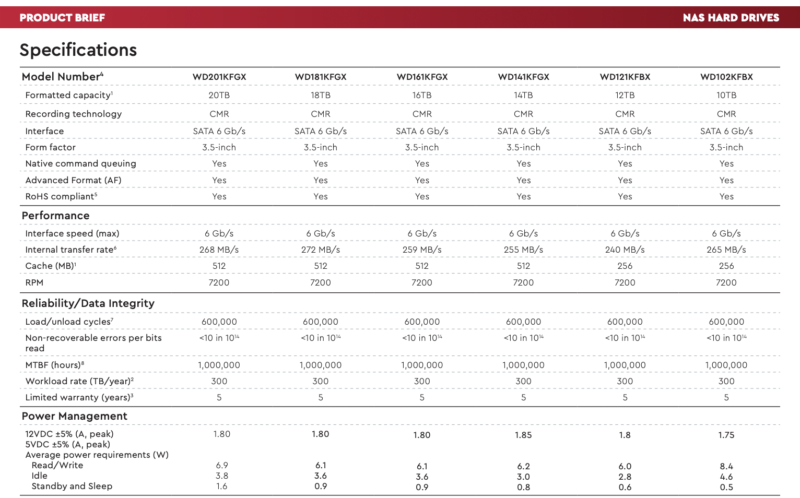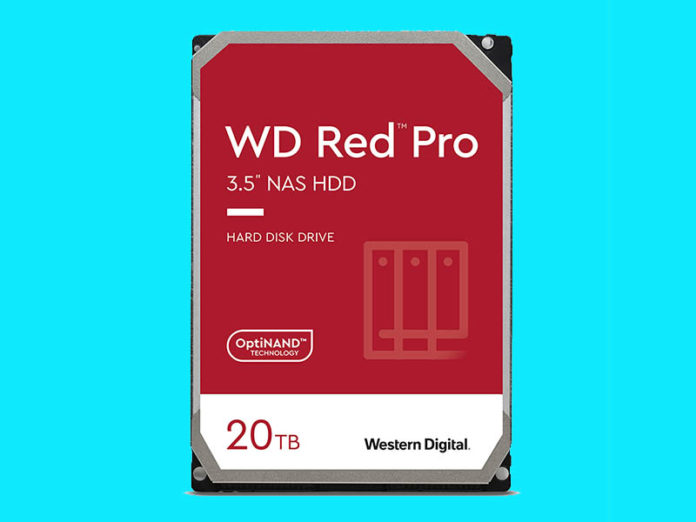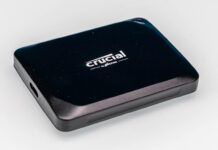Western Digital has a new 20TB hard drive. Specifically, the WD Red Pro 20TB drive is targeting a segment down market from the company’s previous efforts. With the new release, we get a new capacity point at a lower price (~$500 USD) than with the previous generation.
WD Red Pro 20TB Launched
The new WD Red Pro model, named the WD201KFGX, is important not just because of its capacity. The drive is part of the “Red Pro” line, as distinguished from the traditional WD Red line. STH tested and found that WD’s surreptitious swapping of SMR into its WD Red line was causing serious performance issues. As a result of user backlash, the company launched the WD Red Plus line which is CMR-based, and maintains the CMR-based WD Pro line that this is part of. At STH, we do not recommend standard WD Red SMR drives for our users’ NAS applications due to potential issues.
The new drives offer 1M hour MTBF and only a 300TB/ year workload rate. WD defines “Workload Rate is defined as the amount of user data transferred to or from the hard drive.” For most applications that is not an issue, but it means the drives can only be read or written 15 times per year. Given the capacities and use cases, writing that much is unlikely to be an issue, but we wanted to quickly mention this. The drive has the same workload rate applies to the 2TB drive which would have 150 entire drive reads or writes a year. What is becoming abundantly clear is that WD does not have increasing faith in its hard drives. For some context, one can do 20TB of transfer on the drive in less than 24 hours so it takes about two weeks per year to hit that total. In other words, these are roughly 4% duty cycle drives. [Edit: Math was wrong on the first one, calculated 1 drive capacity instead of total 300TB time.]
Here are the key specs for the new drive:

One can see the 300TB/ year workload rating on this 20TB drive. Also somewhat interesting is that the press announcement discussed OptiNAND like the company’s other ePMR 20TB drives, but it is not in the updated product brief.
Final Words
It is great that we have a new capacity, but we are now in the era where WD’s rated workloads seem very low. These are supposed to be “Pro” drives and higher-end models in the company’s lines meant for 24×7 operation in higher-end and denser NAS units. This is another step the company is taking to de-rate its “premium” drive segment. For most users, this will not be an issue, but we urge WD to update this spec in the future.





The 300TB/year is weird, but also the error rate: <10 per 10^14 bits read. This disk has 1.6*10^14 bits, so basically each time you read the disk you are guaranteed a failure.
Out of curiosity, do we know why the accepted write load would be so low? With flash, I know that writes are effectively a somewhat destructive operation, so while you can control how fast the device dies by picking the right NAND and overprovisioning it’s fundamentally the case that using relatively high voltages to force charge onto a floating gate isn’t good for its health.
Historically, though, futzing with the magnetization of platter coatings was considered effectively nondestructive; at least within the limits of what drive speed would allow during a reasonable operational life. Are the newer energy-assisted techniques they use to allow extremely high density platters such that they now degrade the platter surface or its ability to be magnetized in the future in some way?
I assume that WD didn’t put that on the spec sheet because they wanted an article like this to be written, so there’s probably a reason for it; I’m just surprised because in my (strictly layman’s) understanding of HDDs it has always been the case that the magnetic medium was effectively immortal relative to whatever moving part or controller IC would eventually kill the drive.
To Marcel’s point: all drive manufacturers know that they will have read errors. This seems like a case where the bit density of the platter, and the ability to “write” at that density has surpassed the ability to ECC errors at read time. These errors will accumulate until some threshold is passed and now that disk is corrupted to the file system.
Could the annual workload rating be more about the lifetime of the actuators and read/write heads than the platters? If that’s the case, increasing aerial density would have zero effect on how durable the drive is. It might even have a negative effect since there would be less room for error for the actuators.
For a limited time, you can get their 20TB WD Gold https://www.westerndigital.com/products/internal-drives/wd-gold-sata-hdd#WD201KRYZ for only $59 more than the WD Red Pro and it has much better specs.
“As a result of user backlash, the company launched the WD Red Plus line which is CMR-based, and maintains the CMR-based WD Pro line that this is part of.”
So everything is CMR? No SMR in either lineup?
Everything today that is supposed to be high tech in nature is mostly junk (hostile). The remains of once American mindset companies having fully decayed, thus standards have been lowered to the gutter, as these hostile entities prioritize the chase for irrational exponential growth. All of which the symptom of corporations being lead by conditioned takers with no sense of loyalty, most of them having refused to defend any nation, not the least relate with host nation and citizens, a repugnant collection of residents of convenience that and selfishly abuse the USA for the purpose of being exploited for selfish gains. The HR departments of these companies and with clear intent, abusing the many social latitudes in the US Constitution to then and with freewill, betray the Declaration of Independence, thus are never in good standing with nation, to keep stocks at irrational values, not for good of nation. In short, the product rating is an engineered acts of disrespect upon those that help create such entities which today have manipulated away competition. Thus pay more to get less longevity, the foul objective being to force repurchase of the same item in shorter time.
James it’s the WD Red that’s not Plus or Pro that’s SMR dumpster fire junk
There is nothing stopping WD from being full of BS, and falsely claiming an extremely low workload, which will be routinely exceeded in normal use, then just denying all RMAs for those devices. I bet that 90+% of these drives would be able to do 100x or more of that workload and not fail, and this is just a convenient BS excuse for WD to be able to legally reject warranty replacement of all but the earliest failures.
“For some context, one can exceed this workload rate by using the drive at its quoted internal transfer rate for less than 24 hours.”
This arithmetic appears wrong.
300TB = ~315,000,000MB
315,000,000MB / 268MBps = 1.2Msec
1.2Msec / 86,400 = ~13.5 days
Seems like if WB is going to deny all RMAs except a dead on arrival, you should just buy white label or refurbished drives. I’m using a few of those, one for three years now, and no failures
After losing two raid5 arrays 5md-based servers because rebuilds failed due to rotted blocks, I now run a full data scrub of each array every month.
Data protection would burn 80% of these new drives’ entire rated lifetime.
WTF?!
That should have said IN md-based servers. Argh.
I think this article does a good job at highlighting the product difference (at least spec-wise) between the various grades of drives with the same capacity. No doubt that the lesser drives will have lesser specs and a lesser price, but the real-world use of the various drives shows that even the lesser drives do have substantial capabilities even when not the top-tier enterprise variety. And I think this is common for all drive manufacturers since all drive designs regardless of capacity are generally trending towards a single drive design with quality assurance ‘binning’ the drives based on their quality. This is not uncommon in other industries (remember how Intel introduced the Celeron?), so I don’t consider it a problem just so long as you know what to expect.